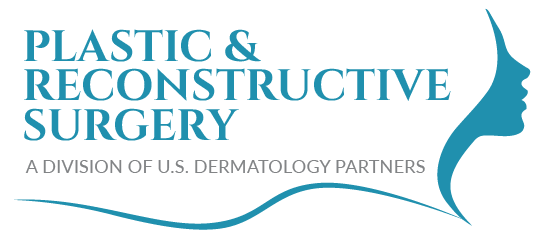Subscribe to our newsletter to receive the latest news and offers.
Board-Certified Plastic Surgeon
MyChi Le, MD

Plastic Surgery in Overland Park, Kansas
MEET MyChi Le, MD
Dr. MyChi Le, a distinguished plastic surgeon, began her illustrious career with a biochemistry degree from the University of Missouri, Columbia, advancing to earn her medical degree from the University of Kansas School of Medicine. Her dedication to plastic surgery took her back to Mizzou, where she completed her residency, honing her expertise in a wide array of surgical techniques.
Passionate about the transformative power of plastic surgery, Dr. Le excels in procedures that restore confidence and enhance well-being. “My practice allows me to make significant changes in a person’s life. In a single day, I might reconstruct a patient’s nose following cancer removal, and then provide a mommy makeover, including breast implants or lifts and abdominoplasty, to a mother seeking to reclaim her self-image,” Dr. Le explains. Her skills extend to breast reconstructions, reductions, eyelid rejuvenations, and hand surgeries, including carpal tunnel and trigger finger treatments. Dr. Le also specializes in non-surgical enhancements like Botox and filler injections for facial rejuvenation, underscoring her comprehensive approach to beauty and health.
A proud member of the American Society of Plastic Surgery, Dr. Le brings over eight years of experience from her previous practice at Mosaic Life Care in St. Joseph, Missouri. As a Kansas City native, she is thrilled to serve the community in Overland Park and Kansas City, bringing her expertise closer to home.
When not in the clinic or operating room, Dr. Le cherishes time with her family and dogs. She has a passion for ballroom dancing, snow skiing, karaoke, and is an enthusiastic Kansas City Chiefs fan, embodying a vibrant spirit that complements her professional dedication.
Click on the area you're most interseted in
Featured Services
Chin & Neck
Legs

AFFILIATIONS
PROFESSIONAL MEMBERSHIPS
Clinic LOCATION
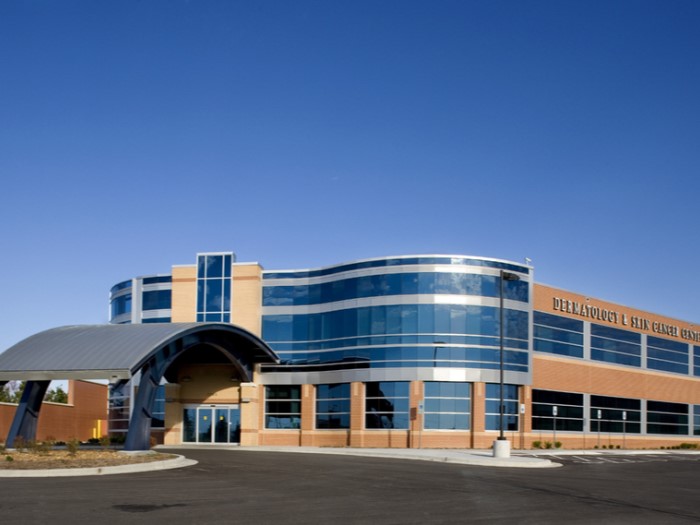
Plastic & Reconstructive Surgery Lee's Summit
3265 NE Ralph Powell Rd
Lee's Summit, MO 64064
(816) 454-3424

Plastic & Reconstructive Surgery Kansas City Shoal Creek
8380 N Tullis Ave
Kansas City, MO 64158
(913) 754-4939
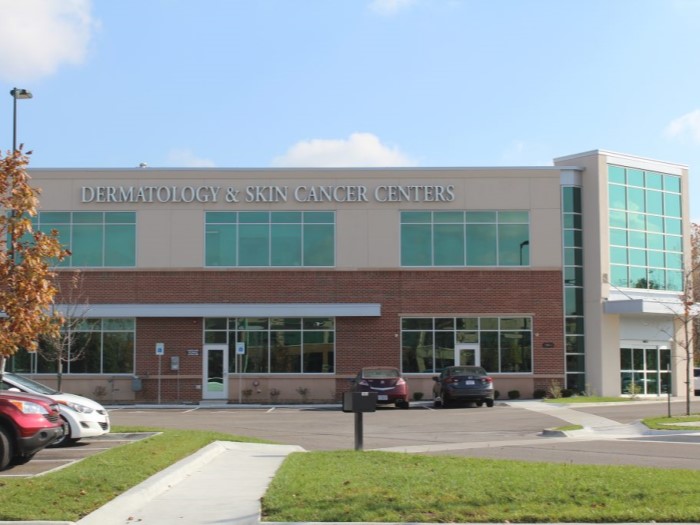
Plastic & Reconstructive Surgery Overland Park
7901 W 135th St
#100
Overland Park, KS 66223
(913) 754-4939
Services
SERVICES OFFERED ByMyChi Le, MD


What is Blepharoplasty (Eyelid Surgery)?
Eyelid surgery, known as blepharoplasty, is a transformative procedure that can rejuvenate and brighten the eyes by addressing excess skin, muscle, and fat. This surgery is versatile and can be applied to the upper, lower, or both eyelids, providing a tailored solution to individual needs. Cosmetic eyelid surgery encompasses various techniques, such as the removal or repositioning of fat and skin around the eyes. The lower eyelids, for example, may be accessed through discreet incisions along the lash line or within the eyelid itself. Depending on specific needs, fat may be tightened, repositioned, or removed. Some patients may opt for additional procedures, such as a chemical peel or fat grafting, to address the tear trough, the area beneath the eye. Certain blepharoplasty methods focus on repositioning or tightening fat pads without significant removal. This approach aims to achieve a more natural appearance while preserving the structural integrity around the eyes. Considering that the eyelid and brow age together, a simultaneous brow lift may be recommended during eyelid surgery for a comprehensive rejuvenation.What to Expect During a Blepharoplasty Consultation
Initiating the process involves a consultation with your plastic surgeon. Completion of pre-visit forms (available in Patient Resources) is necessary. During the appointment, you'll discuss your medical history, allergies, current medications, and any prior surgeries. Clearly defining your aesthetic goals is essential, and you can assist this process by examining your face in the mirror and identifying features that contribute to an aged appearance. Bringing photos from a decade or more ago can further aid in planning. Your plastic surgeon will conduct an examination to determine the optimal eyebrow shape and position, proposing procedures that yield natural-looking results. Options, including brow lift surgery, chemical peels, laser surgery for the lower lids, transconjunctival lower eyelid surgery, and fat grafting, will be thoroughly discussed. In cases where eyelid surgery addresses visual obstruction, health insurance may cover certain procedure costs. The plastic surgeon and staff will assess this possibility, potentially coordinating with an ophthalmologist for visual field testing. Consultation photographs may be taken to support insurance claims for surgery expenses.How is a Blepharoplasty Surgery Performed?
Eyelid surgery can take place in an outpatient surgery setting or an office operating room, with the choice influenced by the surgery type and individual comfort levels. Upper-lid surgeries typically last an hour, while combined upper and lower-lid procedures take approximately an hour and a half. Patients typically spend an hour in the recovery room.I'm Interested in a Blepharoplasty
For more information on eyelid surgery procedures or to schedule your consultation, reach out to Plastic & Reconstructive Surgery today.
Brow Lift
The shape and position of the eyebrows dramatically impact the way our face looks. As one ages, the position of our eyebrows can change as wrinkles, fine lines, and saggy or puffy skin impacts the shape of your face, changes your facial expressions, and leaves you feeling less confident. In many cases, a brow lift, which may also be referred to as a forehead lift, is a good option to restore a smooth, more youthful appearance. At Plastic & Reconstructive Surgery – a division of U.S. Dermatology Partners, our skilled team is happy to offer this surgical option. You can learn more about brow lift surgery on this page or by contacting Plastic & Reconstructive Surgery.What Is a Brow Lift?
Brow lifts are typically recommended for people who are 35 years of age or older as the lowering of the brow line is often a result of aging. However, there are cases where people are genetically predisposed to have droopy skin around the eyes or a lower brow line, and they may benefit from this procedure at a younger age. A brow lift is a cosmetic procedure that improves the appearance of the face. While the goal of the brow lift surgery is the same, there are three different versions:- Open Brow Lift – This is an original version of the procedure and remains very popular and effective. It’s called an open brow lift because the skin is actually pulled back to reveal the tissues and muscle beneath, so they can be adjusted.
- Endoscopic Brow Lift – Rather than performing the brow lift procedure through an open incision, the endoscopic brow lift utilizes cameras inserted into a small opening to guide the adjustment of the muscles and tissues. This minimizes the risk of scarring and reduces healing time compared with the open brow lift.
- Forehead Shortening – For some, the brow looks low because the forehead is long, or the hairline is set too far back. In these situations, it may be beneficial to move the hairline down as well as lift the brow to create a shorter, more aesthetically pleasing forehead.
Benefits of Brow Lifts
If you want to smooth your skin, lift your eyes, and improve your overall appearance, a brow lift may be for you. Some of the many benefits of this cosmetic surgery procedure include:- Reducing the appearance of forehead and brow line wrinkles
- Renewing the eyebrow arch
- Elevating the brow line to its natural position
- Minimizing the appearance of wrinkles and fine lines around the eyes
- Eliminating excess skin
Recovery After Brow Lifts
Brow lift recovery will vary slightly based on the type of brow lift received. To minimize bruising and swelling, the forehead may be taped or bandaged around the surgical site. Additionally, a drain may be placed to remove fluids and blood around the incision sites that may accumulate under the skin. Once the original bandaging is placed, your surgeon will provide aftercare instructions that should be followed throughout healing. In 10-14 days, any stitches will be removed. After the first two weeks, you can return to work in most cases. After a month, you can resume more of your regular routine, including light exercise with your surgeon’s approval. Healing will continue for a few months after brow lift surgery.Risks Associated with Brow Lifts
When performed by a qualified plastic surgeon, brow lifts are a relatively low-risk procedure, but all surgical procedures do come with associated risks. Some of the common risks include:- Bleeding
- Swelling
- Numbness
- Pain
- Asymmetry
- Need for revision surgery to achieve desired results
- Infection

Chin Surgery
Cosmetic enhancement of the chin aims to restore harmony to the lower face, jawline, and neck. Individuals pursue chin lift surgery for various reasons, such as addressing a perceived "weak" chin or dissatisfaction with the shape or direction of the chin. Two common approaches to altering chin appearance involve advancing the bony section of the chin or inserting an implant through a small incision. Your plastic surgeon will assist you in determining the most suitable option for your needs.What to Expect During the Consultation
Initiating the process involves a consultation with your plastic surgeon and their support staff. You will be required to discuss your medical history, encompassing surgeries, allergies, and current medications. Your plastic surgeon will collaborate with you to identify the optimal shape and position for your chin, exploring various surgical types and combinations to achieve the most natural results. Chin surgery may be complemented by procedures such as volume augmentation of the jawline, a neck lift, or a facelift.How Is Chin Surgery Performed?
The surgery takes place in an accredited surgical facility. While certain procedures can be performed with the patient sedated and under local anesthesia, most individuals opt for general anesthesia. Your plastic surgeon will thoroughly explain all available options and guide you through the decision-making process. Whether you are prepared to schedule your chin surgery consultation or have additional inquiries, feel free to contact Plastic & Reconstructive Surgery today. We are here to assist you.
What is a Facelift?
A facelift, medically termed rhytidectomy, can enhance facial harmony and foster a more youthful appearance. The aging process, environmental factors, stress, and fluctuations in weight can collectively impact facial features, causing a descent and deflation effect. This misalignment between the structural support—our bones—and the positioning of fat and skin results in a sagging appearance, contributing to an older look. Facelift surgery involves the removal of excess skin and, in some cases, the restoration of lost volume, aiming to reinstate facial balance.Am I a Suitable Candidate for Facelift Surgery?
Determining the most appropriate facelift type for you is a collaborative effort with your plastic surgeon, who may also suggest complementary procedures like a brow lift or eyelid surgery to achieve comprehensive facial rejuvenation. While the majority of facelift patients fall within the age range of 40s to 60s, age is not a limiting factor for the procedure.For all elective surgeries, it is recommended that patients:
- Acknowledge potential adverse effects, including pain, cost, recovery time, and scarring.
- Maintain good physical and emotional health, as surgery imposes physical trauma requiring robust healing.
- Establish support systems at home and work.
- Refrain from smoking, as nicotine can impede the healing process.
What to Expect During a Facelift Consultation?
The process commences with a consultation involving your plastic surgeon and staff. You will discuss your medical history, encompassing past surgeries, current medications, drug allergies, and tobacco use. Before the consultation, reflect on your facial features, noting three that you appreciate and three that you find unfavorable. Bringing photographs from the past 10 to 15 years aids in determining the most suitable facelift approach. Current photos will be taken during this visit. Toward the conclusion of the consultation, you'll receive a cost estimate covering surgery, hospital fees, anesthesia, and related procedures.How Is the Surgery Conducted?
Facelift surgery occurs in an accredited facility with full anesthesia overseen by a board-certified anesthesiologist. Blood pressure is closely monitored during surgery to minimize postoperative bleeding risks. Before the procedure, your plastic surgeon marks the planned incisions and reviews consultation photographs. Medications are administered to reduce swelling and anxiety. Incisions are typically made in the hairline at the temples, in front of the ear, or within the ear canal, extending behind the ear to the back of the hairline. An additional incision under the chin allows access to neck and jawline muscles. Any supplemental procedures, such as eyelid surgeries or fat grafting, are performed after the facelift. The overall surgical duration typically ranges between three and six hours, contingent on the procedures. Post-surgery, a loose dressing, and a light compressive bandage are applied. Approximately an hour in the recovery room precedes your release to go home, followed by a next-day follow-up appointment in the office.I'm Interested in an Facelift
Whether you're prepared to schedule your facelift consultation or have additional queries about the procedure, reach out to Plastic & Reconstructive Surgery today for assistance.
What is a Neck Lift?
A neck lift is a procedure designed to rejuvenate the contours of the neck, restoring a more youthful appearance. Individuals often pursue this surgery to address issues such as neck sagging, excess fat, fullness under the chin, or the presence of a "gobble" in the neck. In some cases, patients choose neurotoxin injections into the neck muscles to alleviate "banding," but it's important to note that this is a temporary solution requiring repeated injections every four to six months.What to Expect During a Consultation?
The initial stage involves a consultation with your plastic surgeon and their support staff. You will discuss your medical history, including surgeries, allergies, and current medications. Additionally, you'll explore the features in your face and neck that contribute to an aged appearance. Bringing photos of yourself from 10 to 15 years ago can serve as a helpful reference when articulating your goals and planning the procedure.How Is a Neck Lift Performed?
Neck lift surgery takes place in an outpatient surgery center. The duration of the surgery depends on the extent of the neck deformity, but most procedures are typically completed within approximately two hours. An additional hour is allocated for the recovery room.I’m Interested in a Neck Lift
If you're seeking further information or wish to arrange a consultation to explore the possibilities of neck lift procedures, please don't hesitate to get in touch with us at Plastic & Reconstructive Surgery. Our dedicated team is readily available to answer any additional questions you may have, providing you with the guidance and support you need to make informed decisions about enhancing your neck's appearance. Your journey to a rejuvenated and more confident you start here.
What is Neck Liposuction?
Are you looking to recapture a more youthful and refined neck contour? Neck liposuction is a cosmetic procedure designed to help you achieve just that. Many patients turn to this technique to effectively eliminate excess fat and fullness under the chin, a common concern that can contribute to a less defined neck profile. By precisely removing unwanted fat deposits, this procedure can rejuvenate your appearance, creating a more sculpted and harmonious neckline that reflects a youthful vitality. If you're ready to enhance your neck's aesthetic appeal, consider exploring the transformative possibilities of neck liposuction.What Can I Expect During a Consultation?
The first step in the process is a consultation with your plastic surgeon staff. You will be asked to discuss your medical history, including surgeries, allergies and current medications. You will also need to talk about the features in your face and neck that you think make you look older. It will be helpful if you bring photos of yourself from 10 to 15 years ago to use as a reference when discussing your goals and planning the procedure.How Is Neck Liposuction Surgery Performed?
Neck liposuction is performed in an outpatient surgery center. The length of surgery depends on the degree or severity of neck deformity, but most procedures are complete within one hour to 90 minutes. An hour is required in the recovery room.I'm Interested in Neck Liposuction
Whether you have additional questions about this procedure or want to schedule a consultation, we’re here for you. Contact Plastic & Reconstructive Surgery today.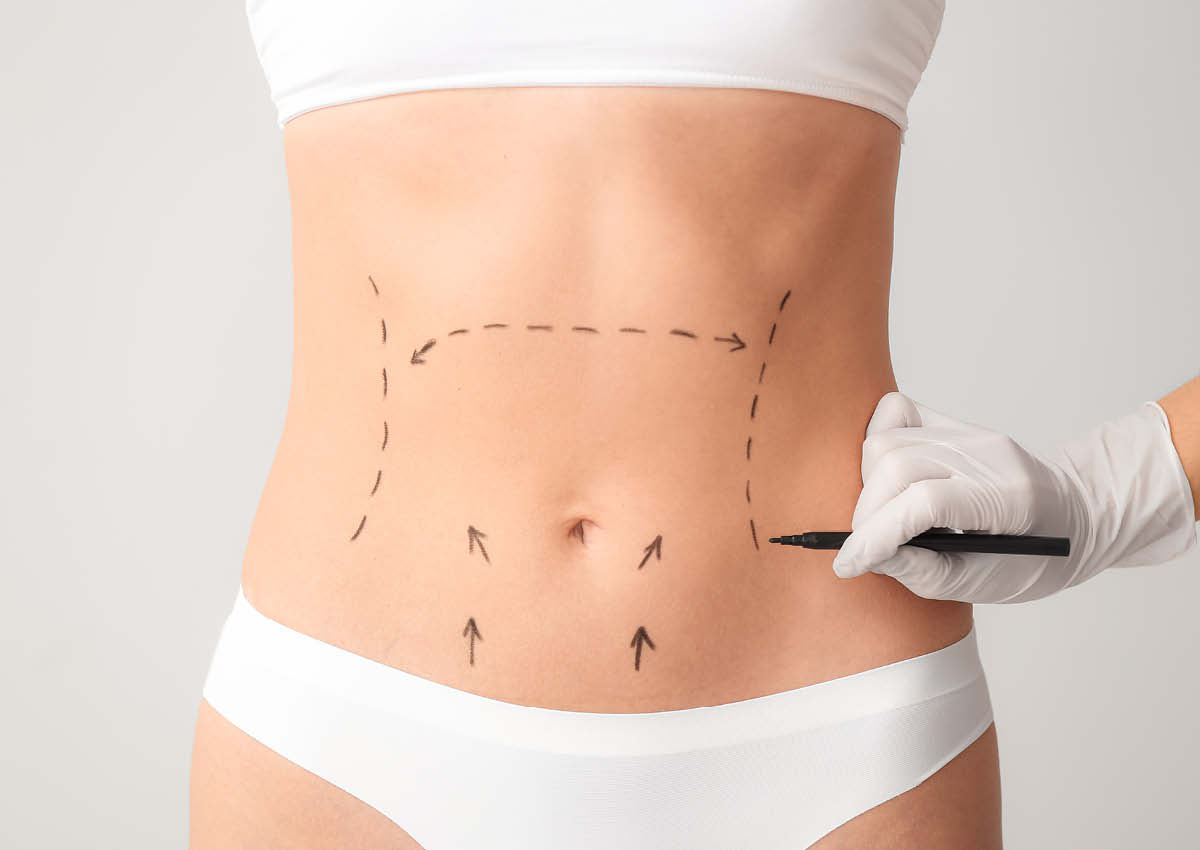
What is an Abdominoplasty?
Abdominoplasty, commonly referred to as a tummy tuck or body contouring, is a surgical intervention designed to eliminate surplus fat and skin, aiming to enhance the firmness and tautness of the abdominal area. This procedure addresses issues such as loose skin, weakened muscles, and excess fat deposits. It's important to note that while a tummy tuck can be beneficial, it should not be viewed as a substitute for maintaining a healthy lifestyle through proper diet, exercise, and weight management. Rather, it can complement a patient's efforts to adopt a healthier way of life. The specific type of abdominoplasty—whether it be mini, modified, full, extended, or circumferential—depends on the individual needs of each patient, and the experienced plastic surgeons at Plastic & Reconstructive Surgery will provide guidance throughout this decision-making process.Am I A Good Candidate for Abdominoplasty?
Individuals who make ideal candidates for abdominoplasty are already committed to a healthy lifestyle, incorporating balanced nutrition and regular exercise into their routines. Ideally, candidates should be within 20% of their ideal body weight and in good physical and emotional health.What To Expect During an Abdominoplasty Consultation?
The journey begins with a consultation with your plastic surgeon and the staff. During this meeting, your medical history will be discussed, and you'll be invited to stand in front of a full-length mirror to articulate your goals. Your plastic surgeon will assess your torso comprehensively, from the breastbone to the knees, examining both the front and back. The surgical details, including facilities, costs, preoperative procedures, and potential scheduling of a preoperative appointment, will be reviewed by the staff.How Is an Abdominoplasty Surgery Performed?
Abdominoplasty is performed under full anesthesia in an accredited outpatient or hospital surgery setting, with the supervision of a board-certified anesthesiologist. The duration of the procedure is typically around three hours, although the specific time varies depending on the individual patient and the amount of skin to be addressed. The nature of the surgery is tailored to the patient's unique goals. In most cases, the procedure commences with the patient positioned face down to address fat deposits on the hips and thighs. The patient is then flipped onto their back to restore the front of the abdomen, incorporating liposuction to refine the waistline. While many patients undergo a traditional hip-to-hip abdominoplasty, other options exist. For instance, some may opt for a mini abdominoplasty, involving smaller incisions to address limited skin concerns. Extended or circumferential abdominoplasties involve the removal of more skin and stretch marks, along with the tightening of muscles and the removal of fat deposits from the hips and thighs. Individuals who have undergone significant weight loss, such as through bariatric surgery, may opt for a circumferential abdominoplasty to eliminate excess, loose skin. Patients must refrain from using tobacco products for at least two months before the surgery.I'm Interested in an Abdominoplasty
Whether you are ready to schedule a consultation or have inquiries about the procedure, the team at Plastic & Reconstructive Surgery is available to assist you. Contact us today for more information.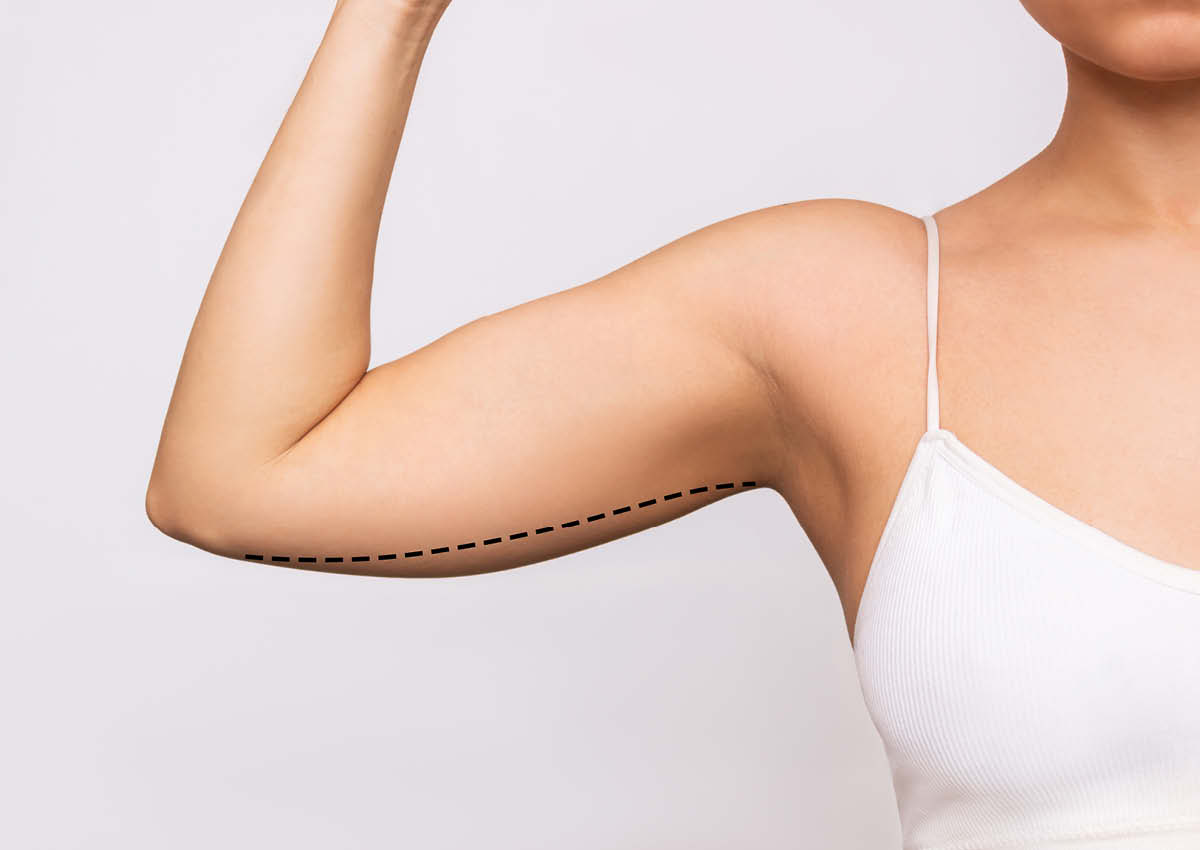
What is an Arm Lift (Brachioplasty)?
An arm lift, also known as brachioplasty, is crafted to eliminate surplus skin and fat from the upper arm, enhancing its firmness and tightness. The length of arm lift incisions varies based on the individual needs and goals of the patient. The experienced plastic surgeons at Plastic & Reconstructive Surgery can guide you throughout your arm lift decision-making process.Am I a Suitable Candidate?
A suitable candidate for an arm lift adheres to a healthy diet and exercise regimen, aiming to be within 20% of their ideal body weight while maintaining physical and emotional well-being.What Should I Anticipate During a Consultation?
Initiating the process involves a consultation with our office. During this session, you will meet with your plastic surgeon to delve into your medical history. Standing before a full-length mirror, you'll discuss your objectives, allowing the plastic surgeon to strategize for your procedure. If you opt to proceed with the surgery, a preoperative appointment will be scheduled to provide prescriptions, arrange follow-up visits, review surgical consent, and capture photographs for your medical record. It is crucial for patients to refrain from tobacco use for at least two months before the surgery.How is an Arm Lift Surgery Performed?
Brachioplasty surgery is exclusively performed in an accredited outpatient or hospital surgery setting, with the patient under the care of a board-certified anesthesiologist, ensuring complete anesthesia. The surgery takes place while the patient is fully asleep in an accredited operating facility and typically lasts between two and three hours, contingent on the amount of skin being removed.I'm Interested in an Arm Lift
Whether you seek additional information about the procedure or have specific questions, we are available to assist you. Reach out to Plastic & Reconstructive Surgery today!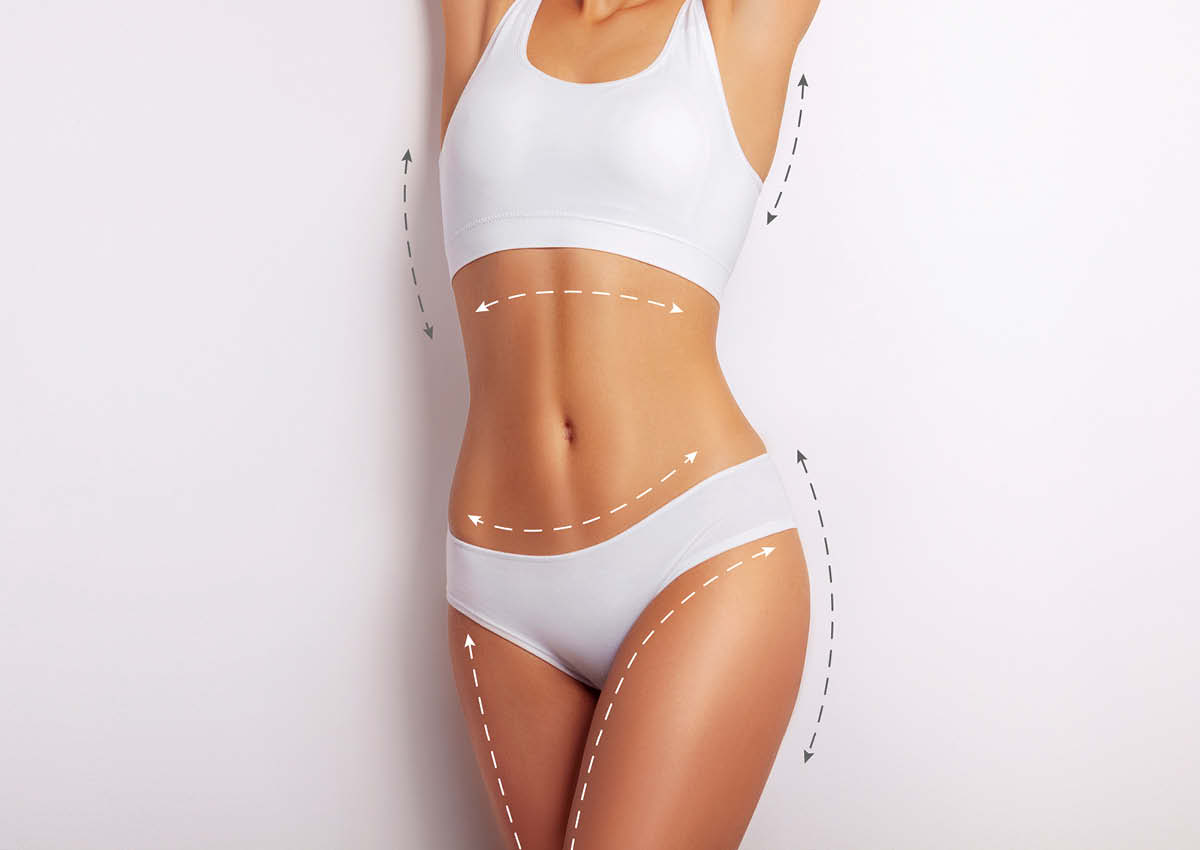
Body Contouring
Body contouring refers to a group of popular cosmetic surgery procedures recommended after substantial weight loss. The goal of these procedures is to smooth, tighten, and reshape the body. You can learn more about body contouring procedures, benefits, recovery, and associated risks in this blog. If you’re interested in learning more or getting started with treatment, schedule a consultation visit with the team at Plastic & Reconstructive Surgery – a division of U.S. Dermatology Partners. Our skilled board-certified plastic surgeons will review your treatment options and help you find the ideal solution to meet your needs.What Is Body Contouring?
Following dramatic weight loss, especially rapid changes, the body often has excess skin and fatty deposits that need to be removed to improve body shape. Additionally, loose underlying tissues and structures may need to be tightened. For these reasons, people may choose to work with a plastic surgeon to create a body contouring plan following substantial weight loss. While surgeons often refer to body contouring as its own procedure, it’s actually a term that describes a number of different cosmetic surgery solutions used to deliver an overall improvement in the shape and tone of the body after dramatic weight loss. Some procedures that may be used as part of a body contouring treatment plan include:- Facelift - to remove and lift excess skin around the chin, jaw, and neck.
- Arm Lift - to remove sagging skin or fatty deposits left behind on the arms.
- Breast Lift, With or Without Implants - to restore a more lifted, rounded appearance to breasts.
- Tummy Tuck - to remove excess skin and fatty deposits around the stomach as well as smooth and tighten underlying muscles and tissues.
- Lower Body Lift - to smooth and reshape the abdomen, buttocks, and upper legs.
- Medial Thigh Lift - to remove excess skin and eliminate sagging of the inner thigh.
Benefits of Contouring Your Body
The benefits of body contouring are immediately apparent for those who choose to move forward with these procedures. Some common benefits include:- Smooth, tight, and defined body shape
- Appearing younger
- Improving confidence
- Alleviating adverse effects related to loose skin, including chafing, sores, and infection
What Does the Recovery Process Look Like?
Before beginning body contouring treatments, your plastic surgeon will walk you through the entire process and what to expect. Make sure to ask questions and take notes, so you feel confident that you’ll be able to follow your surgeon’s directions closely to ensure you heal quickly and comfortably. While every treatment plan is different, most patients will experience the following during recovery after body contouring surgery:- Surgical dressings are placed immediately following the procedure, and your surgeon will provide directions for changing these dressings and keeping wounds clean.
- In some cases, tubes are placed to drain fluids away from the surgical site. These will usually be removed within two weeks of treatment.
- Oral and or topical medications to prevent infection, relieve pain, and promote wound healing should be used as directed by your surgeon.
- You should get plenty of rest during healing. This may include instructions for when you should resume specific activities. For instance, if skin is removed from the abdomen, you may need to avoid bending for several days or weeks as the surgical site heal.
- Finally, a follow-up visit will be scheduled with your surgeon, but if you notice any concerns before that visit, make sure to reach out to your surgeon right away.
Are There Risks Associated?
Like any other plastic surgery treatment, body contouring does have associated risks. Receiving these procedures from a skilled board-certified plastic surgeon mitigates many of the risks. However, even the best plastic surgeon cannot remove all surgical risks. Common risks associated with body contouring surgery include:- Adverse response to anesthesia (local and/or general)
- Excessive bleeding during the procedure or following treatment
- Blood clots, including deep vein thrombosis (DVT) and pulmonary embolism (PE)
- Seroma, or the accumulation of fluid beneath tissue at the surgical site
- Infection and poor wound healing
- Changes in sensation that may be temporary or permanent
- Excessive Scarring
- Need for revision due to unhappiness with initial results
I'm Interested in Body Contouring
If you're intrigued by the idea of body contouring and would like to learn more about the procedure or have specific inquiries, don't hesitate to get in touch with us at Plastic & Reconstructive Surgery. Our team is here to provide you with the information and support you need to explore the possibilities of achieving your desired body shape. Contact us today to take the first step towards your body contouring journey.
Carpal Tunnel Release
If you’ve been struggling with pain, inflammation, and impeded range of movement caused by carpal tunnel, you’ve probably tried a variety of solutions to improve symptoms. From pain medications to physical therapy, there are numerous non-surgical treatments available for carpal tunnel. Unfortunately, these solutions aren’t always effective. When less invasive options aren’t working, it’s time to discuss carpal tunnel release surgery. At Plastic & Reconstructive Surgery – a division of U.S. Dermatology Partners, our trusted cosmetic surgeons provide advanced surgical treatments, including carpal tunnel release.What Is Carpal Tunnel Release?
Carpal tunnel release is a surgical procedure used to relieve pain, tension, and weakness in the hand and wrist that occurs due to pressure on the median nerve that runs through the wrist and hand. It may also be referred to as nerve or carpal tunnel decompression. The median nerve and tendons work together to flex the hand and curl the fingers. This structure that controls hand movement runs through the wrist within the carpal tunnel, which is very narrow. This makes it common for swelling or inflammation in this passage to pinch the median nerve, which causes pain and limits movement. During a procedure, the surgeon will cut through the carpal ligament to increase the space in the carpal tunnel by essentially ‘opening up the roof of the tunnel’.What are the Benefits?
There are many benefits to moving forward with surgery if less invasive treatments are ineffective, including:- Relieving pain and pressure in the wrist and hand
- Restoring most if not the full range of wrist movement
- Improving dexterity
- Preventing further damage to the nerves and other structures
Recovery After Carpal Tunnel Release
Carpal tunnel release is one of the easiest and least invasive procedures offered by our experienced plastic/hand surgeons. This surgery is performed on an outpatient basis, which means you can go home immediately after your procedure. There’s no need for an overnight hospital stay. Your surgeon will provide instructions for at-home care immediately following treatment. Your hand and wrist will likely be placed in a soft wrap for at least 2-3 days with restricted activities for 2-3 weeks. You’ll need to keep the incision (sutured area) clean and dry until the follow-up appointment with your surgeon who will evaluate your healing progress. For the weeks and months following carpal tunnel release surgery, you should perform a range of exercises and may be referred for a hand therapy program to develop and strengthen the muscles if needed.What Are the Risks Associated?
Any surgery, even the safest and least invasive, will have risks, and carpal tunnel release surgery is no different. Before you move forward with any surgical procedure, you should talk through all of your treatment options with a skilled hand surgeon. Those who are struggling with carpal tunnel should try less invasive treatment options, and surgery is typically only recommended if these solutions aren’t effective. While a plastic surgeon will do their utmost to ensure your comfort and safety throughout the procedure, some risks associated with carpal tunnel surgery include:- Allergic response to medications, bandaging, or anesthesia
- Persistent symptoms
- Bleeding heavily immediately after surgery or for a prolonged period during healing
- Injury to internal structures like blood vessels, nerves, or muscles
- Numbness or loss of sensation that may be temporary or permanent
- Muscles weakness
- Infection
- Scarring
- Complex regional pain syndrome (CRPS), a rare usually short-term condition causing swelling and discomfort
I'm Interested in a Carpal Tunnel Release Procedure
If you are seeking more details or wish to take the next step towards a Carpal Tunnel Release procedure, please don't hesitate to get in touch with us at Plastic & Reconstructive Surgery. Our expert team is readily available to provide you with comprehensive information and guide you through the process of scheduling a consultation. We understand that your decision is important, and we are here to address any additional questions or concerns you may have. Your well-being and comfort are our top priorities, and we are committed to ensuring that you embark on your journey towards relief and improved hand function with confidence and peace of mind. Contact us today to start the path toward a more comfortable and pain-free life.
Liposuction
If there are areas of your body you wish had a little less fat, liposuction from a skilled plastic surgeon may be a great option. This procedure is easily one of the most popular solutions available from cosmetic surgery professionals, and it can be used to address excess fat deposits across multiple areas of the body. On this page, you can learn more about what liposuction is, its benefits, and what to expect from the procedure. If you’re interested in learning more, don’t hesitate to reach out to Plastic & Reconstructive Surgery – a division of U.S. Dermatology Partners. We’ll be happy to answer your questions or schedule a cosmetic surgery consultation to explore your treatment options.What Is Liposuction?
The clinical term for liposuction is lipoplasty. It’s a surgical treatment used to remove excess fat deposits. It’s often recommended for the removal of excess weight around the abdomen, but it’s also a popular option to remove weight from a wide variety of body areas where stubborn fat deposits aren’t improved through diet and exercise alone. Liposuction can be used to remove fat deposits from:- Face
- Neck
- Back
- Chest
- Abdomen
- Upper arms
- Hips
- Thighs
- Calves
- Ankles
Benefits of Liposuction
There are many reasons patients choose to move forward with liposuction, and some of the many benefits that lead people to receive liposuction include:- Permanent Fat Removal – Fat cells removed by liposuction are gone forever, but you can regain fat in other areas. So, it’s important to maintain a consistent weight after liposuction treatment.
- Safe Fat Removal Solution – Liposuction is a minimally invasive and safe option for surgical fat removal if our surgeons believe you are a good candidate.
- Better Health – Though liposuction is not intended as a means to weight loss, removal of excess fat does help to decrease body mass index, making it easier to exercise and improving overall health.
- Remove Stubborn Fat Deposits – Liposuction makes it possible to remove exercise-resistant fat deposits.
- Improves Self-Esteem – Following fat removal with liposuction, people often feel more confident and better about themselves and are more comfortable in their own skin.
Recovery After Liposuction
Following liposuction, your plastic surgeon will apply dressings to protect the treatment sites and place compression bandages to minimize swelling during healing. They will provide you with directions on how to care for your body as it heals. That may include specific instructions for bathing as well as medications you need to take for pain or apply topically to prevent infection. You should limit your activity following liposuction to give your body plenty of time to rest and heal. Follow all instructions from your surgeon carefully to ensure fast and comfortable healing.Risks Associated with Liposuction
Choosing to move forward with any type of surgery, including liposuction, means you should be aware of potential risks. By learning what potential issues can arise from surgery before the procedure, you will be better prepared to see the warning signs of these risks and seek treatment right away. Everyone responds differently to surgery, but some of the common risks associated with liposuction include:- Adverse reactions to anesthesia
- Pain or discomfort
- Bleeding
- Bruising
- Blood clots
- Areas of skin / fat that is not completely smooth
- Infection
- Scarring
- Loss of sensation that may be temporary or permanent
- Nerve damage
- Blood vessel damage
- Muscle damage
- Cardiopulmonary complications
- Seroma (fluid accumulating beneath the skin)

Lower Body Lift Post Weight Loss Surgery
Following weight loss surgery, many people are excited to feel more confident and comfortable with their bodies, but the results can be marred by the way the weight loss changes their shape. Loose, hanging skin or pockets of fat may remain as weight is lost rapidly. Once a person achieves their desired weight, it may be beneficial to consider treatments to remove excess skin and laxity. Lower body lift is one of the most often recommended treatments post-weight loss surgery. On this page, you can learn more about this procedure and its benefits. When you’re ready to get started, please contact the skilled professionals at Plastic & Reconstructive Surgery – a division of U.S. Dermatology Partners to schedule a consultation.What Is Lower Body Lift?
During weight gain, the skin and supportive tissues of the body will stretch out over time. When weight is lost rapidly, the skin and tissue don’t always bounce back the same way. Following weight loss surgery, the waistline or belt line is one of the areas where the skin and underlying structures become loose or sag after weight loss surgery. In this situation, a lower body lift may be a good treatment option. Lower body lift may be referred to by a number of different names, including belt lipectomy, abdominal lipectomy, panniculectomy, or tummy tuck. By any name, this cosmetic surgery option is offered to remove excess skin and fat deposits, lift the abdomen and buttocks, and flatten and smooth tissue. This body contouring surgery helps patients achieve their ideal results following rapid weight loss.Benefits of Lower Body Lift
There are numerous benefits associated with lower body lift following weight loss surgery, including:- Improved satisfaction with weight loss results
- Increased self-esteem and confidence
- Alleviated discomfort caused by loose skin rubbing or pinching
- Reduced risk for concerns like swelling, rashes, infection, and ulcers
- Cleaning thoroughly is easier
- Corrected issues with daily activities like walking, sitting, and urinating
Recovery After Lower Body Lift
Following your procedure, you may get to go home right away, but you will most likely need an overnight stay. Your surgeon should be able to give you a good idea of what to expect prior to treatment. Following the surgery, they will provide detailed instructions that should be followed carefully throughout your healing. They will also schedule a follow-up appointment to check your progress. If a drain tube is placed under the skin to remove fluid, that visit may occur within a few days or a week. Otherwise, your surgeon may ask to meet with you several weeks after treatment. During recovery, your surgeon will walk through medications you can take to manage pain. They will also discuss diet and exercise specifications, walk you through wound care procedures, and discuss potential issues that may be cause for concern and require emergency medical intervention. Rest is one of the most important aspects of care following lower body lift, so make sure to take time away from work and other activities, get plenty of sleep, and generally plan to take it easy for several weeks after treatment.Risks Associated with Lower Body Lift
While belt lipectomy is generally considered a safe procedure, there are always risks when choosing to move forward with surgery. Specifically, those who choose to move forward with lower body lift after rapid weight loss may be at higher risk as belt lipectomy is an additional surgery, and their bodies may have a more difficult time healing. Additionally, those who are older, suffer from chronic health issues, or are otherwise considered high-risk should discuss their treatment options carefully with their plastic surgeon before moving forward. Some common complications associated with lower body lift include:- Adverse reaction to anesthesia
- Infection and poorly healing wounds
- Excessive bleeding immediately after surgery or prolonged bleeding during healing
- Formation of blood clots in the legs and other areas that can travel throughout the body
- Damage to nerves, muscles, and other underlying structures
- Unhappiness with the final results leading to a need for revision surgery

Mohs Defect Reconstruction
Mohs surgery is one of the leading skin cancer treatment options. This innovative surgical technique allows surgeons to remove cancer cells while minimizing the impact on surrounding, healthy tissue. Even though this procedure is conservative compared to traditional surgical excisions, there will still be a loss of healthy tissues. Mohs surgery may leave marks, indentations, scars, and deep pits in the skin that are unsightly, especially when skin cancer is removed from the face. In these cases, Mohs defect reconstruction surgery may be recommended to restore the lost tissue and improve appearance. On this page, you can learn more about what Mohs defect reconstruction is and what to expect from this procedure. If you want more information or you’re interested in getting started with this surgical treatment, Plastic & Reconstructive Surgery – a division of U.S. Dermatology Partners is here to help. Don’t hesitate to reach out to ask any questions you may have or schedule a consultation with one of our knowledgeable surgeons.What Is Mohs Defect Reconstruction?
Mohs micrographic surgery is typically performed by a dermatologist as part of skin cancer treatment. The surgery involves removing thin layers of the cancer lesion and small amounts of surrounding tissue. As each layer is removed, it’s carefully examined under a microscope. The process is repeated until there are no cancer cells present in the layer of removed tissue. Compared to traditional surgical skin cancer removal, this process does help to retain healthy tissue, but defects may still be present. In this situation, a patient can work with a plastic surgeon to help close the wound or hole that is left after the Mohs procedure. Many patients opt to have Mohs defect reconstruction performed immediately after their skin cancer removal with the dermatologist, while other Mohs defects may benefit from closure with a facial plastic surgeon. Most commonly, the Mohs repair with facial plastic surgery would be performed 1-2 days after the Mohs procedure. Consult with your Mohs micrographic surgery provider to determine the best course of action for your particular case. Depending on the results of the Mohs surgery, a variety of reconstructive surgical techniques may be utilized. Considerations before reconstruction planning include the size and location of the surgical defect and scar visibility. In some cases, a skin graft, using tissue from another location, is performed to replace the lost structure. In other situations, a skin flap, which uses adjacent tissue to cover the defect, may be recommended. For those whose Mohs surgery defect goes deeper, a cartilage graft may also be needed to fully restore structure. Other procedures may be recommended depending on the patient’s specific needs.Benefits of Mohs Defect Reconstruction
The main benefit of Mohs defect reconstruction is clear – the restoration of a patient’s appearance following surgery. For those patients whose skin cancer is removed from the face, Mohs defect reconstruction may be especially beneficial. Repairing Mohs defects can also improve confidence and help patients move forward following skin cancer treatment.Recovery After Mohs Defect Reconstruction
Immediately following your Mohs defect reconstruction surgery, you may notice some swelling and pain. This is a normal part of the healing process. For the first week, change bandages and dressings regularly and keep the area clean as instructed by the surgeon. For most people, over-the-counter pain medications are adequate to manage discomfort, but prescription pain medications may be prescribed as needed. Within a week, any stitches will be removed, and swelling and discomfort typically begin to diminish as well. Most people can return to work around this time, and they can gradually add more activity as tolerated over the next two to three weeks. Every person heals differently, so the amount of time it takes to recover will vary. After your procedure, your surgeon should provide a healing and aftercare plan to guide you through the process. Following all instructions is essential to ensure you make a full recovery with minimal discomfort.Risks Associated with Mohs Defect Reconstruction
Any surgery comes with some risks, but Mohs defect reconstruction surgery, when performed by a qualified professional, has significantly low risk. While Mohs defect reconstruction is considered a safe procedure, some risks and concerns patients should be aware of before getting started include:- Poor wound healing – skin grafts and other repairs can be rejected by the body, or the site may not heal well in general.
- Infection – look for skin that is warm to the touch around the surgical site, fever, nausea, chills, and other common signs of infection.
- Excessive bleeding – if the surgical site continues to bleed after the first few days, contact your surgeon.
- Numbness – loss of sensation in the treatment area is common during healing and can be permanent.
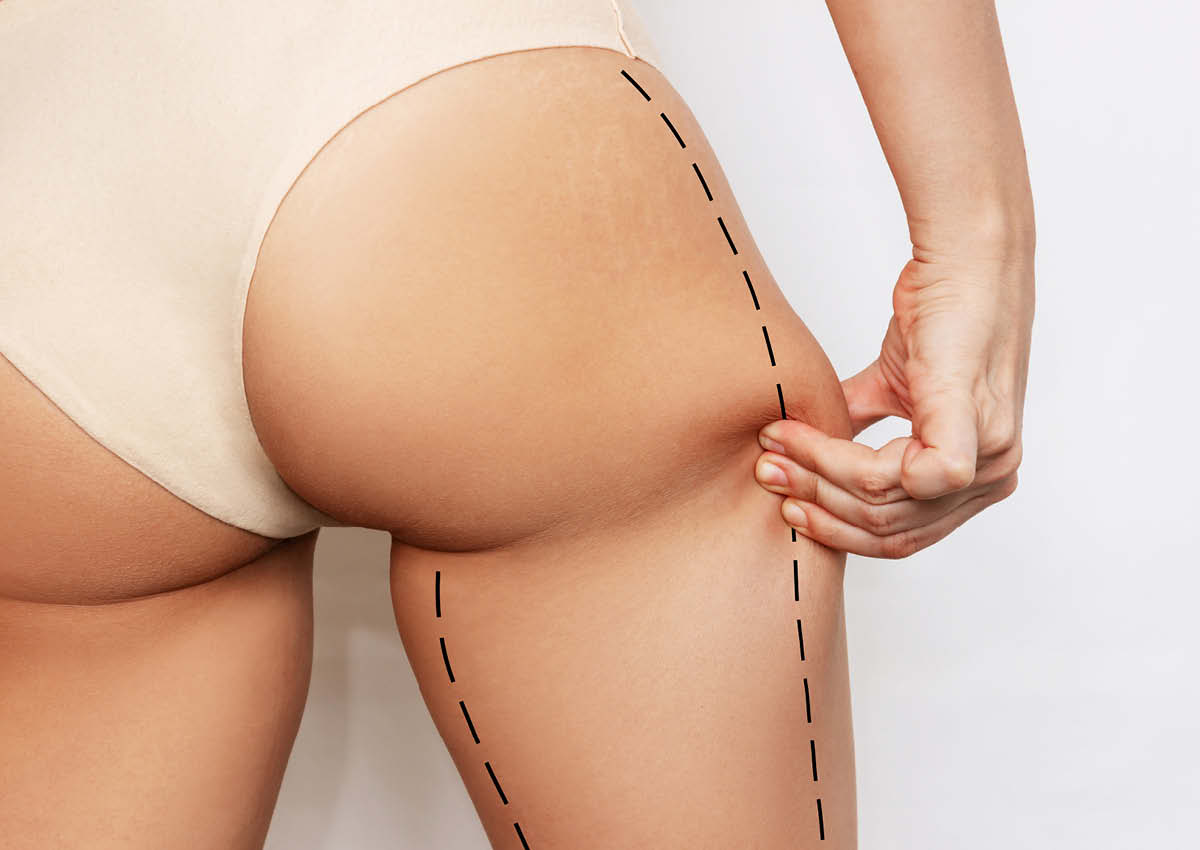
What is a Thigh Lift?
A Thigh Lift is a cosmetic procedure that targets and eliminates excess skin and stubborn fat from the inner thigh region, resulting in a remarkable enhancement of firmness and tightness. In addition, what sets this procedure apart is its adaptability. The length and placement of incisions are meticulously tailored to align with the unique needs and aspirations of each patient, ensuring that individual goals are met with the utmost precision and personalization. If you're considering a Thigh Lift and desire to achieve smoother, more sculpted thighs, don't hesitate to reach out to us at Plastic & Reconstructive Surgery. Our experienced team is here to provide comprehensive information and guide you toward a journey of confidence and rejuvenation. Your path to toned and contoured thighs begins with us.Am I A Suitable Candidate for Thigh Lift Surgery?
An ideal candidate for a thigh lift adheres to a healthy diet and regular exercise routine, aiming to be within 20% of their ideal body weight while maintaining physical and emotional well-being.What To Expect During the Consultation?
The initial phase involves a consultation at our office. In this meeting, you will engage with your plastic surgeon to discuss your medical history. Standing before a full-length mirror, you'll articulate your goals, enabling your plastic surgeon to meticulously plan your procedure. If you opt to proceed with the surgery, a preoperative appointment will be scheduled to provide prescriptions, arrange follow-up visits, review surgical consent, and capture photographs for your medical record. Note, patients must refrain from tobacco use for at least two months before the surgery.How Is the Surgery Conducted?
Thigh lift surgery takes place with the patient under full anesthesia in an accredited operating facility. The duration of the surgery typically ranges between two and three hours, contingent on the extent of skin removal.I’m Interested in a Thigh Lift Procedure
If you're eager to learn more about the transformative possibilities of a Thigh Lift procedure, we invite you to reach out to Plastic & Reconstructive Surgery today. Our experienced team is readily available to provide you with comprehensive information and to assist you in scheduling a consultation. We understand that your decision to explore this cosmetic procedure is a significant one, and we are here to address any additional questions or concerns you may have. Your well-being, comfort, and satisfaction are our utmost priorities. We are dedicated to helping you achieve the toned and sculpted thighs you desire with confidence and peace of mind. Contact us today to embark on your journey towards a more confident and contoured you.
Trigger Finger Release
Trigger finger occurs when a finger gets stuck in a bent position. Not only does it lead to limited motion and weakness in the fingers, but it can also cause significant pain. This condition develops when the tendon becomes stuck within its protective covering, and it’s unable to release. In most cases, medical professionals will try non-surgical treatments first before referring patients to a plastic/hand surgeon for trigger finger release surgery. If you’re interested in learning more about surgical options for trigger finger release, don’t hesitate to reach out to us at Plastic & Reconstructive Surgery – a division of U.S. Dermatology Partners to schedule a consultation.What Is Trigger Finger Release?
If you’re experiencing pain or an impeded range of movement in one finger, trigger finger release surgery may be your best option. The tendons that move fingers have a protective covering that surrounds them, but when the covering becomes inflamed or irritated, the tendon may not be able to glide through smoothly, causing it to become stuck. Trigger release surgery makes the opening that the tendon passes through wider.Benefits of Trigger Finger Release
For those struggling with the negative effects of trigger finger, release surgery offers numerous benefits, including:- Relieved pain and discomfort
- Restored range of finger motion
- Reduced swelling and inflammation
- Less pressure during finger movement
Recovery After Trigger Finger Release
Trigger finger release is a day surgery. The entire process is completed in the surgeon’s office either under local anesthesia (numbing) alone or with mild sedatives to calm and relax the patient. After treatment, recovery takes just a few weeks. You’ll need to rest the treated hand and especially limit the use of the released finger for 2-3 weeks. You should follow aftercare instructions carefully to keep the surgical site clean and promote healing. They may also recommend topical and/or oral medications to prevent infection. Over-the-counter pain and anti-inflammatory medications should be used to manage discomfort during healing.Risks Associated with Trigger Finger Release
Surgery for trigger finger release is relatively safe and minimally invasive, but there are always risks associated with any surgical procedure. This surgery is performed by making a relatively small incision, which minimizes the risks associated with other surgical procedures. The entire surgery is completed in one short visit, so there’s no need for an overnight stay or general anesthesia, which further reduces surgical risks. You should always take time to consult with a knowledgeable plastic/hand surgeon before committing to any surgical treatment. They can walk you through all of your treatment options, answer your questions, and help you prepare for what to expect during surgery. A skilled surgeon will mitigate many of the risks associated with trigger finger release, but there are still some potential risks associated with trigger finger release, including:- Allergic response to bandaging, medications, numbing, and other surgical materials
- Infection
- Scarring
- Stiffness or limited range of movement
- Loss of sensation that may be temporary or permanent
- Nerve damage
- Tendon becoming mispositioned
- Complex regional pain syndrome (CRPS), a rare usually short-term condition causing swelling and discomfort

Tummy Tuck / Abdominoplasty
Many people want to create a smoother, flatter stomach, but even with diet and exercise, they struggle to see the desired results. Whether you’ve struggled to flatten and tone your abdomen for years or are looking for a way to reverse age-related skin and muscle laxity, a tummy tuck, also called an abdominoplasty, may be the best option. Keep reading below to learn more then reach out to schedule a consultation visit with the trusted team of cosmetic surgery specialists at Plastic & Reconstructive Surgery – a division of U.S. Dermatology Partners. During a plastic surgery consultation visit, a cosmetic surgeon can answer any questions you have about tummy tuck surgery and help you explore all of your treatment options, so you feel completely confident before moving forward with abdominoplasty.What Is Tummy Tuck Surgery?
Tummy tuck surgery is a procedure used to remove excess skin and fat that has accumulated around the abdomen. Abdominoplasty can also repair muscles that have weakened or separated. While tummy tuck surgery can create a smoother, flatter abdominal profile, it shouldn’t be considered a substitute for exercise, diet, and healthy weight loss plans. In fact, tummy tuck surgery isn’t usually recommended for anyone who may experience significant fluctuations in weight, including those who are working to lose weight and women who are planning on becoming pregnant. Weight fluctuation will dramatically impact the results of a tummy tuck, so it’s always recommended that people be at or near their goal weight before beginning treatment.Benefits of Abdominoplasty
There are numerous benefits to pursuing abdominoplasty, including:- Creating a smoother, firmer belly
- Alleviating pain
- Improving muscle control and bladder function
- Avoiding skin health issues related to excess skin
- Restoring weakened muscles
Recovery After Tummy Tuck
Following a tummy tuck, your plastic surgeon will place dressings to protect the incisions and compress the area to reduce the amount of swelling and place pressure that keeps the area supported during healing. Your surgeon will provide instructions for aftercare that should be followed closely to ensure you heal quickly and completely. The surgeon will also discuss any oral or topical medications you should use to promote healing, reduce the risk of infection, and alleviate pain. They’ll also walk through how to clean the area, including when it’s safe to shower. Your surgeon will schedule periodic follow-up visits to ensure you are healing fully and provide additional treatments that may be necessary.Risks Associated with Abdominoplasty
Every surgery has risks associated, and abdominoplasty is no different. Before you begin surgical treatment, it’s essential that you understand potential risks, so you can work with your plastic surgeon to reduce the chances that issues will occur. Every person responds differently to surgery, but some of the common risks associated with tummy tuck include:- Adverse reaction to anesthesia (local or general)
- Imperfect results that cause a need for revision
- Discomfort
- Swelling
- Bleeding
- Blood clots
- Cardiopulmonary complications
- Seroma (accumulation of fluid beneath the skin)
- Infection or poor wound healing
- Loss of sensation that may be temporary or permanent
- Scarring or skin discoloration

Breast Augmentation
Breast augmentation surgery is a relatively common form of plastic surgery that delivers numerous benefits for those who choose to move forward with this procedure. It’s important to have all the facts before making the final decision to move forward with any plastic surgery procedure. On this page, you can learn some of the basic details about breast augmentation, but to truly understand the procedure and your treatment options, you should work with a skilled plastic surgeon like one of the professionals at Plastic & Reconstructive Surgery – a division of U.S. Dermatology Partners. During a consultation visit, a plastic surgeon can fully explain your options and develop a personalized breast augmentation plan.What Is Breast Augmentation Surgery?
You may have heard people refer to breast augmentation as a “boob job,” or your surgeon may have called it an augmentation mammoplasty. By its clinical or common name, the procedure offers the same outcomes. It utilizes implants or fat transfers to increase the size of breasts. It may be desired to increase chest size for those who have naturally smaller breasts, restore volume following childbirth or weight loss, or improve the shape and symmetry of the breasts. While breast augmentation can improve the size and shape of breasts and help to get a slightly lifted look, it does not lift more significant drooping or sagging breasts. For this, your surgeon will need to perform a breast lift, which may be recommended in conjunction with the breast augmentation procedure.Benefits of Breast Augmentation
There are numerous benefits associated with breast augmentation surgery, including:- Improving the fullness and volume of curves
- Increasing the height and projection of breasts
- Creating better symmetry between breasts
- Creating better overall body symmetry between the chest, waist, and hips
- Delivering a more youthful appearance
- Improving self-image and sense of femininity
- Restoring lost fullness after weight loss, pregnancy, or mastectomy
- Allowing for better clothing fit
Recovery After Breast Augmentation
Following breast augmentation, your surgeon will place bandages to protect and support the chest as it heals. This helps to minimize swelling and promote comfort throughout the healing process. Once you have been bandaged and fully recovered from the anesthesia, you will be released to return home. Your surgeon will walk you through at-home care steps and provide you with the necessary guidance to ensure you heal fully and with minimal discomfort. You may receive prescriptions for pain, antibiotics, and/or topical ointments, and other care items to support healing. Your surgeon will also schedule a follow-up appointment to check your healing progress, starting immediately the day after your surgery. You will need to wear a support garment day and night to prevent tugging or putting excess strain on the surgical site. Rest is the most important element of healing post-procedure. Make sure to get plenty of sleep and avoid lifting heavy items, exercising, or performing other strenuous activities until your plastic surgeon releases you for these activities.Risks Associated with Breast Augmentation Surgery
Choosing to move forward with breast augmentation, like any cosmetic surgery procedure, does come with risks. Before you schedule elective procedures, take time to talk with your plastic surgeon, ask any questions you have, discuss concerns, and ensure you fully understand all the risks associated with your specific procedure. Your medical history and the specifics of your procedure will impact the outcomes and risks associated with your surgery. Because surgery always involves some level of risk, you will need to sign consent forms prior to treatment, so it’s important to talk through all of this with your surgeon. Every person will respond to surgery differently, but some risks commonly associated with breast augmentation include:- Adverse response to local and general anesthesia. This is relatively common and can usually be mitigated or immediately addressed during the procedure. However, some patients do have extreme adverse responses to anesthesia. Report any past adverse anesthesia response to your surgeon.
- Some bleeding around the incisions is common for the first few days after the procedure. If bleeding persists or becomes heavy, it may indicate a more serious concern. Please contact your surgeon or visit an emergency department right away.
- Changes in sensation and sensitivity are very common, especially around the nipples. For some, this is temporary, but for others, it is a permanent change.
- The abnormal accumulation of fluid, called seroma, is a common complication following cosmetic surgery procedures. In most cases, the fluid is resorbed during the healing process. However, there are some situations where additional intervention is needed to drain away excess fluid.
- Light bruising at the injection site is common during healing, but more severe bruises, called hematomas, occur when blood pools beneath the skin can be indicative of a more serious concern.
- Irregular, tight, or painful scar tissue formation. Your surgeon will do their utmost to ensure scarring is minimized, but some scarring will occur following surgery. If you have noticeable or painful scar formation, there are steps you can take to address these concerns. Discuss any issues with scar formation with your surgeon.
- Issues with the implant. Leakage, ruptures, incorrect positioning, wrinkling over the implant, and other concerns are rare, but they may happen. If you have concerns, contact your surgeon right away. You may need a revision surgery to correct these irregularities.
- Infection is a risk with any surgery. If you notice signs of infection, reach out to your surgeon as soon as possible.
- Severe or persisting pain. Immediately following and for the first few weeks after surgery, you may notice some pain and discomfort. However, if pain persists or gets worse, contact your surgeon.
- There is a group of rare cancers that may develop as a result of breast augmentation surgery. While the occurrence of these forms of cancer is rare, it’s important to understand the risk before moving forward with treatment.
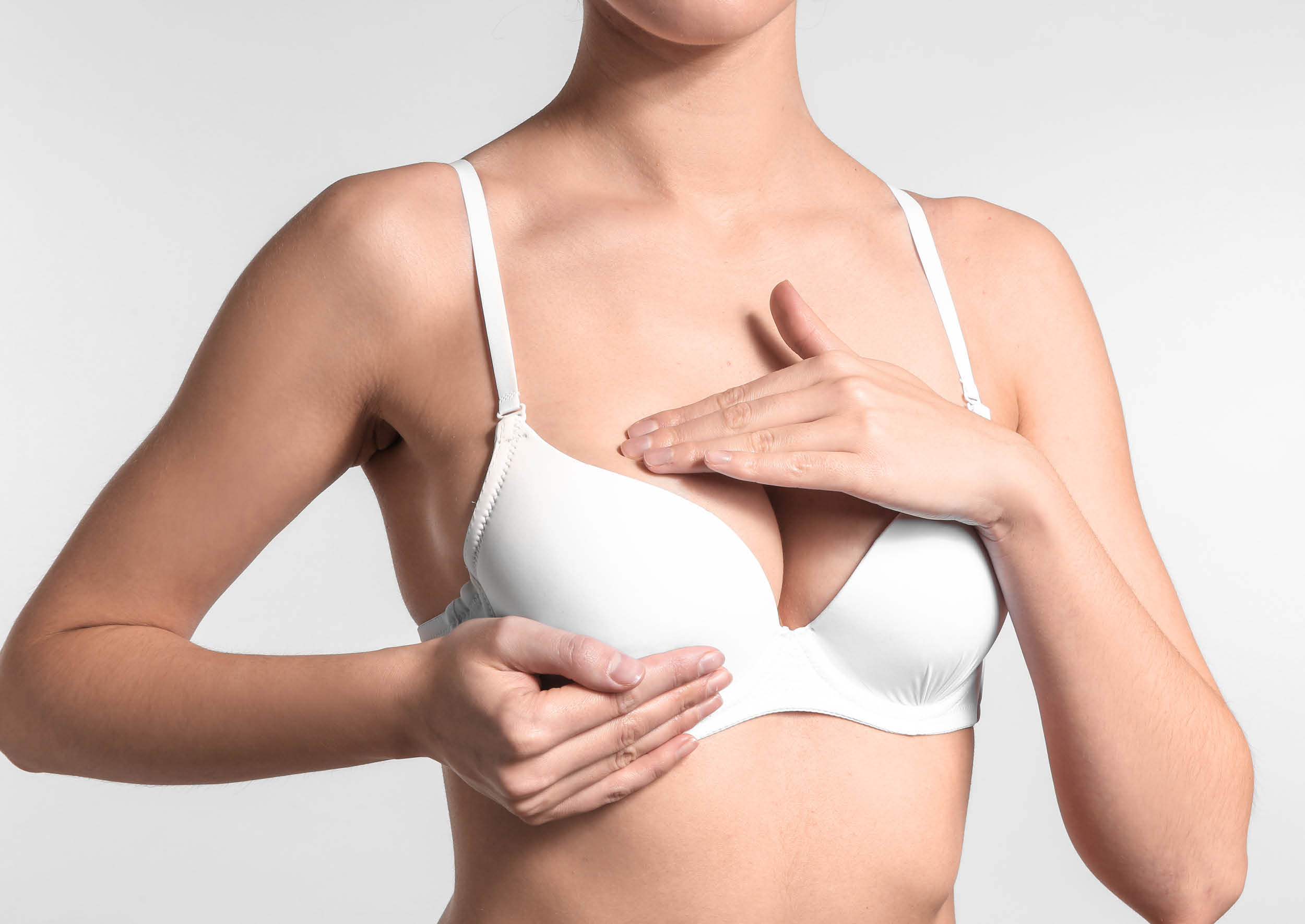
Breast Lift
Age, weight changes, giving birth, hormone shifts, and a variety of other situations may lead to a need for breast lift surgery. This cosmetic surgery option helps many women gain a greater sense of self-esteem and confidence and leaves them feeling more like themselves. If you’ve been considering a breast lift, your first step should be to research, so you know exactly what to expect from this procedure and its results. Reading the basic details on this page is a great start. If you feel that a breast lift is the right procedure for you, don’t hesitate to reach out to the team at Plastic & Reconstructive Surgery – a division of U.S. Dermatology Partners to schedule a consultation visit. During your consultation, one of our skilled plastic surgeons will discuss your goals, desired results, and potential treatment options.What Is Breast Lift Surgery?
The clinical term for a breast lift is mastopexy. This plastic surgery treatment lifts and tightens the breasts. The procedure involves removing excess skin. Then, breast tissues are tightened and reshaped. In addition to giving the breasts a firmer, more lifted appearance, a breast lift can also be recommended to reduce the size of enlarged areolas. Breast sagging and skin laxity around the breasts can occur over time for numerous reasons from genetic predisposition and pregnancy, childbirth, and breastfeeding to weight loss and the simple effects of gravity. If your breasts don’t sit as high as they used to, a breast lift can help you restore that more youthful appearance. However, a breast lift will not change the size or shape of your breasts dramatically. If you’re looking to increase the size of your breasts, an augmentation procedure will be recommended, which may be performed in conjunction with a breast lift. If you would like to reduce the size of your breasts, a reduction may be recommended in conjunction with the breast lift surgery.Benefits of Breast Lift
Some of the reasons why women choose to move forward with breast lift surgery include:- Rejuvenation – Most younger women’s breasts sit naturally higher. Over years of gravity, movement, childbirth, fluctuations in weight, hormonal shifts, and other changes, the breasts will begin to sag. A breast lift provides a rejuvenating effect.
- Improved Self-Confidence – Sagging breasts can make people feel self-conscious or unattractive in and out of clothes. A breast lift can restore a greater sense of confidence.
- Allow Clothing to Fit Better – when breasts are lifted, clothes will hang and fit better against the body.
Recovery After Breast Lift
Following your breast lift surgery, the plastic surgeon applies bandages, compression garments, and other dressing as needed to protect and support the body as it heals. A bandage or support garment should be worn at all times throughout healing to minimize swelling and reduce movement that can increase discomfort. Your surgeon will provide specific aftercare instructions, including oral and topical medications to relieve pain and prevent infection. Additionally, they will set a date for you to return for a follow-up visit to gauge your progress.Risks Associated with Breast Lift Surgery
Like most other surgical procedures, there is a risk of adverse response to anesthesia (both general and localized). Most anesthesia responses are mild and can be addressed during the procedure. However, some people do have more serious complications, which is why it’s important to make your surgeon aware of any past negative experiences you’ve had with anesthesia. Infection is another risk often associated with surgery. Following your surgeon’s aftercare instructions carefully will decrease the risk of infection. Finally, scarring is a common risk factor associated with surgery. While the cosmetic surgeon will do their utmost to conceal incisions within the natural lines of the body, some scarring may occur. If scar tissue is irregular, painful, or otherwise unwanted, there are additional treatments that may be pursued to improve the appearance. In addition to these very common risks associated with surgical procedures, there are also some potential risks specific to breast lifts, including:- Bleeding and hematoma (severe bruising where blood pools beneath the skin)
- Asymmetry and other irregularities that may necessitate a revision surgery
- Loss or change in sensitivity or sensation either permanent or temporary
- Blood clots and cardio-pulmonary concerns
- Accumulation of fluid beneath the skin (seroma)

Breast Reconstruction After Breast Cancer
Receiving a breast cancer diagnosis is likely one of the most difficult things a woman can experience. Going through the treatments, including lumpectomy, mastectomy, radiation treatments, and chemotherapy, can leave them feeling like they’re not even themselves anymore. Breast reconstruction can offer an option to restore your pre-cancer appearance and boost confidence. However, like any surgery, it’s important to completely understand and explore treatment options before committing to a surgical intervention. On this page, we’ll review the basic details of breast reconstruction surgery, but it’s important to talk through this procedure with a professional. When you’re ready to learn more, don’t hesitate to reach out to us at Plastic & Reconstructive Surgery – a division of U.S. Dermatology Partners to schedule a consultation.What Is Breast Reconstruction Surgery?
Following a mastectomy or lumpectomy related to breast cancer, breast reconstruction surgery offers the opportunity to rebuild the lost structure. Breast reconstruction can be accomplished using implants, tissue from other parts of the body, or a combination of the two. Breast reconstruction may be started right away after a mastectomy or it can be delayed until after the mastectomy or lumpectomy site has healed and additional cancer treatments are completed. In addition to restoring the removed shape and breast structure, reconstruction may include repairing or re-creating the nipple and areola. If only one breast was impacted by cancer, breast reconstruction surgery may be performed on the unaffected breast to restore symmetry, if desired.Benefits of Breast Reconstruction
The decision to move forward with breast reconstruction is very personal, but some of the benefits that lead people to move forward with breast reconstruction include:- Eliminate the need for breast forms and devices – These devices restore the lost structure, but they require a lot of work to keep in place and don’t feel natural.
- Renewed symmetry – The proportions and balance of the chest can be uneven after a mastectomy or lumpectomy. Breast reconstruction can improve this balance and symmetry.
- Restored self-confidence – The loss of breast tissue can leave many women feeling self-conscious and restoring that tissue can make a real difference in their confidence.
- Better fitting clothes – Following mastectomy or lumpectomy, clothing may not fit well, leading women to feel uncomfortable in their clothes. Reconstruction will help to restore the breasts to as close to the natural shape and structure as possible.
Recovery After Breast Reconstruction
Following breast reconstruction, your plastic surgeon will walk you through how to care for your surgical site. Follow all instructions precisely to ensure that wounds heal quickly. You’ll also get medication to help with the pain. Rest is one of the most important factors for healing. When we rest, our bodies are able to heal, so plan to take some time off work and get plenty of sleep every day.Risks Associated with Breast Reconstruction Surgery
Like other surgeries, breast reconstruction can lead to concerns during or after treatment, including:- Adverse response to anesthesia
- Bleeding
- Loss of sensitivity (temporary or permanent)
- Blood clots
- Infection
- Seroma (fluid buildup below the surgical site)
- Hematoma (blood buildup below the surgical site)
- Swelling
- Surgical site necrosis (reconstructed or grafted tissue failure)
- Hardening of implant
- Implant leaking

Breast Reduction
The choice to move forward with any cosmetic or medically indicated surgery procedure deserves adequate time and consideration to ensure the right decision is reached. Breast reduction surgery can be an especially difficult choice. There are numerous factors, both aesthetic and medical, that should be taken into consideration before moving forward with breast reduction. You can explore some of the basic information on this page or reach out to the team at Plastic & Reconstructive Surgery – a division of U.S. Dermatology Partners to schedule a surgery consultation visit with one of our skilled plastic surgeons.What Is Breast Reduction Surgery?
Breast reduction surgery is a procedure that removes excess tissue from the breasts. This may mean surgically removing some of the fatty tissue and skin as well as reshaping the remaining structure. A breast reduction procedure may be beneficial in a range of situations, but it is often recommended when the size of breasts causes physical discomfort.Benefits of Breast Reduction
Some of the many benefits that lead people to choose breast reduction include:- Improved quality of life by reducing back pain, allowing for more comfortable exercise and movement, and increasing energy.
- Easier to shop for clothes and find clothing that fits well. This includes the ability to find bras that fit comfortably.
- Alleviate skin irritation on and under the breasts caused by rubbing and sweat.
- Increase self-confidence by allowing women to feel more comfortable and confident in their own skin.
Recovery After Breast Reduction
After a breast reduction procedure, your surgeon will bandage incisions and wrap the breasts to provide necessary support and reduce swelling. Once you are fully recovered from the anesthesia, you’ll be sent home with detailed aftercare instructions. These instructions will include recommendations for cleaning and daily care, prescription and over-the-counter medications as needed, and any other steps you should take during the healing process. One of the most important things you can do during healing is to get plenty of rest. That means sleeping at least eight hours each night, but it also means just taking it easy. You shouldn’t be exercising, picking up heavy items, or performing other strenuous activities until your plastic surgeon gives you the green light.Risks Associated with Breast Reduction Surgery
While your plastic surgeon will do their utmost to ensure safety before, during, and after a breast reduction, there are always risks involved with surgery. It’s important to understand the potential risks before you move forward. Pain, bruising, and long healing times (usually several months) are all to be expected with advanced procedures like breast reduction. Any discomfort should gradually decrease over the several weeks or months of healing. If pain increases or becomes unmanageable, it’s important to reach out to your surgeon. The same is true if the surgical site doesn’t seem to be healing within a reasonable time. Scar formation is another common risk associated with all surgeries. Your plastic surgeon will work to conceal surgical incisions within the body’s natural lines, but there will still be a sign of surgery left behind. However, there are treatment options to further reduce the appearance of scar tissue. In addition to these common surgical risks, some risks specific to breast reduction include:- Decreased sensation in the nipples that can be temporary but may be permanent
- Difficulty or inability to breastfeed can occur for some
- Pregnancy and fluctuations in weight can impact the results of breast reduction surgery
- Asymmetry or irregularities in appearance leading to a need for revision surgery
- Allergic or adverse response to surgical materials (tape sutures, injections, etc.)
- Adverse response to anesthesia
- Blood clots and cardio-pulmonary issues
- Nerve, muscle, or blood vessel damage
- Hardening or excessive firmness of breast tissue
- Bleeding from incisions or blood pooling beneath the skin (hematoma)
- Accumulating fluid beneath the skin (seroma)
I'm Interested in a Breast Reduction
If you're interested in learning more about the Breast Reduction procedure or would like to take the first step towards enhancing your well-being, don't hesitate to reach out to Plastic & Reconstructive Surgery today. Our dedicated team is readily available to provide you with comprehensive information and to assist you in scheduling a consultation. We understand that this decision is a significant one, and we are here to address any additional questions or concerns you may have, ensuring that you embark on your transformative journey with confidence and peace of mind. Your satisfaction and comfort are our top priorities, and we look forward to assisting you in achieving your desired goals.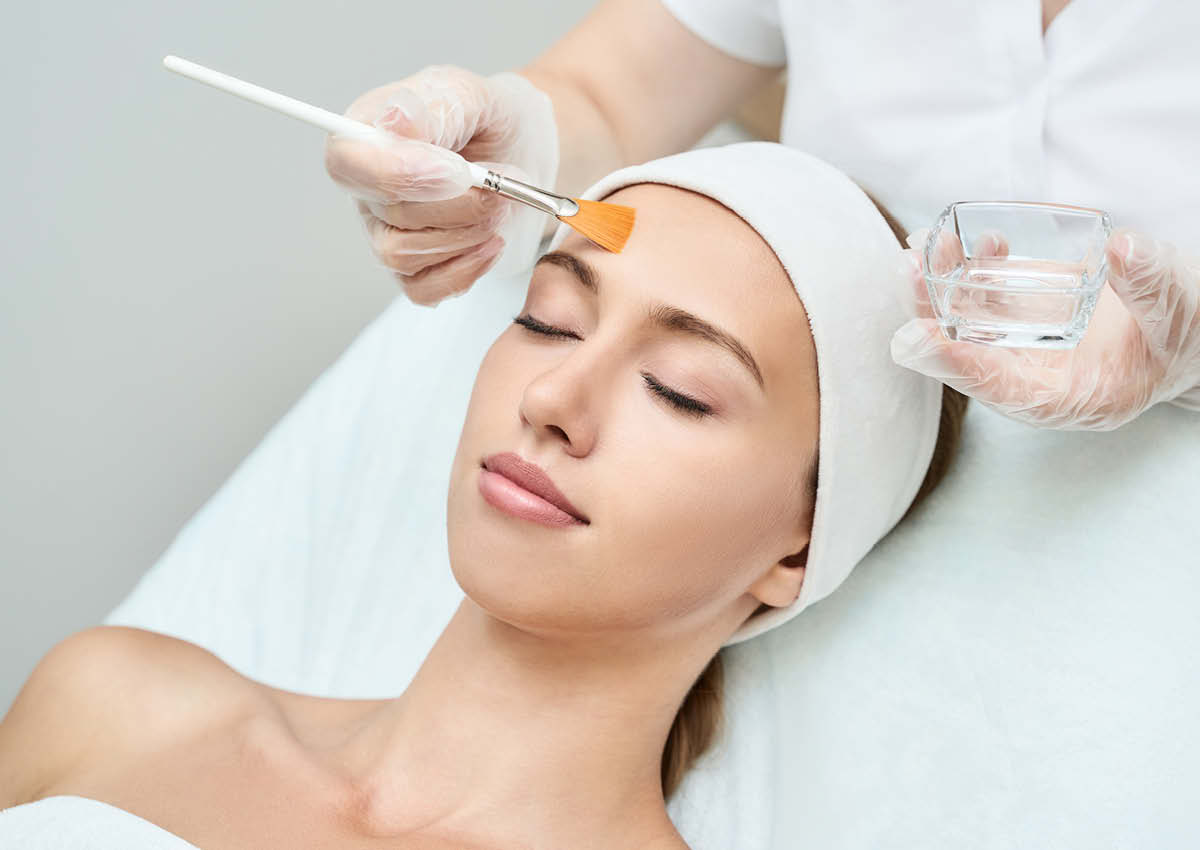
Chemical Peel for Skin Rejuvenation
Experience the transformative power of a chemical peel at Plastic & Reconstructive Surgery, where we specialize in revitalizing aging and discolored facial skin, effectively targeting concerns such as pigmented spots and wrinkles.What to Expect During a Chemical Peel Consultation
Embark on your journey to radiant skin with a comprehensive consultation guided by our expert plastic surgeon and our attentive support staff. Your well-being is our top priority, and to ensure the best possible outcome, we'll delve into your medical history, including past surgeries, allergies, and current medications. Your dedicated plastic surgeon will craft a personalized treatment plan, recommending the ideal peeling depth tailored to your unique needs. In some cases, additional facial aesthetic procedures may be suggested to complement your goals and enhance your overall results.How Is a Procedure Conducted?
A chemical peel can be performed as a standalone treatment right here in our office, all under the comfort of local anesthesia. However, when combined with other surgical procedures, your transformation may unfold in an accredited outpatient surgical facility. At Plastic & Reconstructive Surgery, we prioritize your comfort, safety, and satisfaction. Allow us to guide you through the process and unveil the radiant, youthful skin you desire.I'm Interested in a Chemical Peel
For in-depth information about chemical peels or to schedule a consultation, contact us today. Let us help you rediscover your natural beauty and confidence.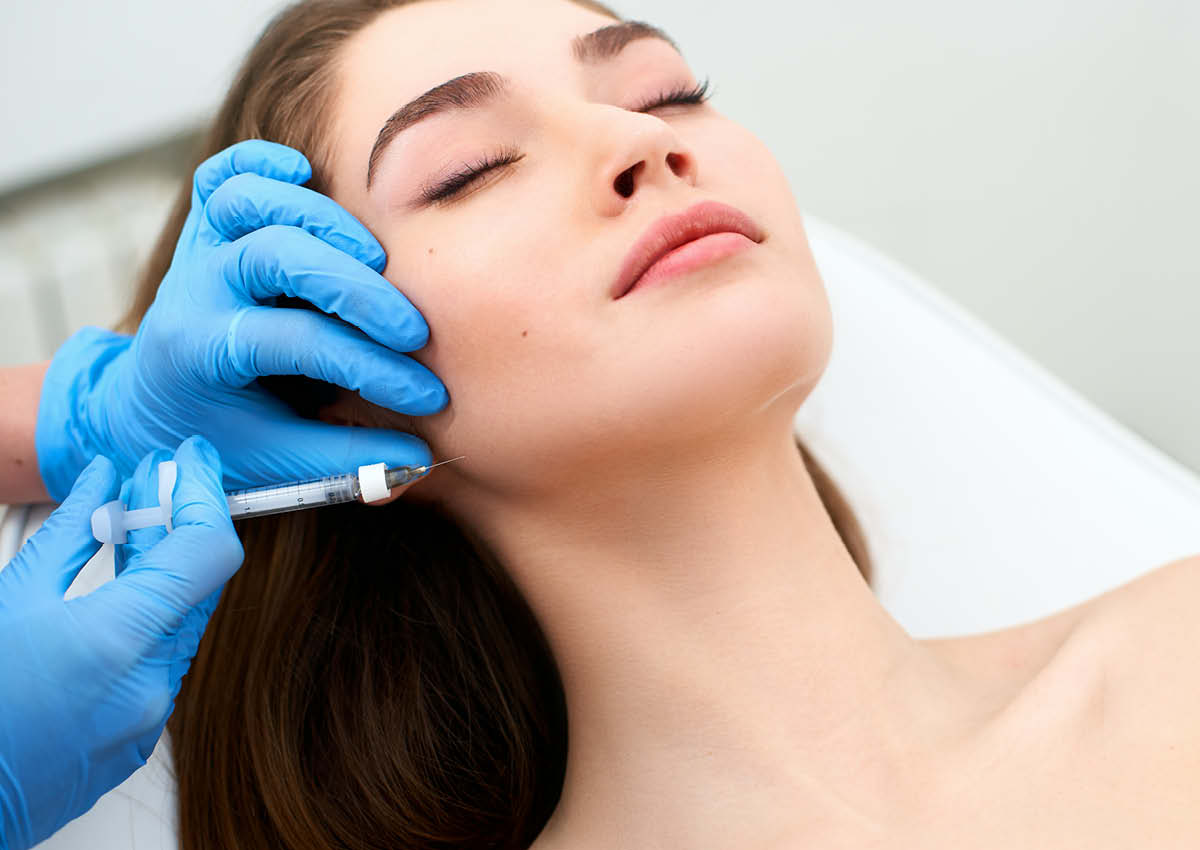
Dermal Fillers
In recent years, the popularity of dermal fillers has increased significantly. This non-invasive treatment is a powerful solution to improve the appearance of deep-set lines and wrinkles, add fullness to thin lips, and create more appealing facial contours. This versatile treatment may be recommended on its own or in conjunction with other cosmetic surgery procedures and solutions offered at Plastic & Reconstructive Surgery – a division of U.S. Dermatology Partners. On this page, you can learn the basics of dermal fillers before your visit.What Are Dermal Fillers?
You may have heard of dermal fillers referred to by one of many popular brand names. However, they are all designed to achieve the same basic objective – add volume. The filler material is injected below the skin, or deeper, to restore volume lost due to wrinkles and scars, plump the lips and cheeks, or reshape facial contours. Each type of dermal filler is specifically formulated to address certain issues. You may request Juvederm or Boletero because you’ve heard of this particular filler, but your plastic surgeon may recommend a different option that will better suit your needs and aesthetic goals. While each brand has its own unique formulation, the main difference between dermal fillers boils down to their ingredients. There are several main types of dermal fillers:- Hyaluronic Acid (HA) Fillers – HA is a naturally occurring substance in the body that moisturizes the skin. For many people, this type of filler is more readily accepted by the body, delivering increased fullness while helping skin attract and retain moisture.
- Collagen Fillers – This is another filler derived from naturally occurring ingredients. Collagen is a protein that gives skin its natural elasticity. By utilizing collagen fillers, your cosmetic surgeon can reshape specific areas while introducing a collagen boost to the skin.
- Biostimulatory Fillers – This filler type is made from synthetic ingredients. While naturally derived fillers may be beneficial, this synthetic option allows for longer-lasting results. The results of biostimulatory fillers can last a year or longer before retreatment is needed.
- Polymethyl-Methacrylate Microspheres (PMMA) Fillers – These fillers are often recommended for deeper facial wrinkles, folds, scars, and furrows in skin like those around the nose or caused by acne scarring. PMMA fillers are considered semi-permanent, and the results last up to five years. They both increase fullness immediately and they increase collagen levels for long-term elasticity and fullness.
Benefits of Dermal Filler Treatment
There are many benefits associated with dermal fillers. Some of the most commonly reported by patients include:- Restored youthful, smooth appearance
- Fast results
- Minimal downtime
- Increased collagen and elastin production
- Can be combined with other treatments
- Increased confidence
Recovery After Dermal Filler Treatment
One of the best things about treatment with dermal fillers is that it’s a non-invasive option. Most people are able to return to work and other activities within 24 hours with minimal to no downtime. There may be some mild redness, bruising, or swelling immediately following injections, but this typically clears up within 48 hours, although bruising may last up to 2-3 weeks. Discomfort and swelling are manageable with over-the-counter pain relievers. The only restriction is to avoid rigorous exercise for the first few days to allow the body to heal.Risks Associated with Dermal Fillers
Risks associated with dermal fillers are few, and even the more serious adverse reactions are treatable. Some of the risks include:- Hypersensitivity – This is usually short-lived and only present at the injection site.
- Numbness – Loss of sensation at the injection site typically goes away within a week, but it may be longer lasting or permanent in rare cases.
- Infection – This is rare when the procedure is performed by a qualified professional, but if you notice symptoms associated with infection like swelling, redness, pain, fluid buildup, or fever, let your doctor know right away.
- Allergic Response – Signs of allergy to the filler include bumps under the skin at the injection site, skin discoloration, redness, and itching.
I'm Interested in Dermal Fillers
If you're interested in learning more about dermal fillers or would like to arrange a consultation to explore the benefits of these non-invasive treatments, don't hesitate to reach out to Plastic & Reconstructive Surgery. Our dedicated team is here to provide you with in-depth information and personalized guidance. We are committed to addressing any additional questions or concerns you may have and helping you make informed decisions about enhancing your facial aesthetics. Your journey to a more youthful and revitalized appearance begins with a simple contact.
Plastic Surgery Injections
Injectables, commonly known as dermal fillers, are crafted to diminish wrinkles, enhance lip volume, address hollow facial areas, and erase lines. These fillers are suitable for patients aged 21 and above. While dermal fillers provide a temporary solution for addressing loose or sagging skin, they play a crucial role in a comprehensive anti-aging strategy. Most dermal fillers are non-surgical and can be combined with other injectables to attain desired outcomes.Available Injectables
Neurotoxin Injections with Botox Cosmetic & Dysport
Neurotoxin injections stand as a prominent modern treatment in plastic surgery, effectively treating facial wrinkles. Administered through small injections, these injections deliver a potent yet temporary substance to limit the movement of specific muscles. While results may vary, neurotoxin injections pose minimal risks.Other Injectables
Hyaluronic Acids:
- Juvederm
- Juvederm Voluma
- Juvederm Volbella
- Juvederm Ultra
- Juvederm Ultra Plus
- Restylane Lyft
- Restylane Silk
- Restylane Define
- Restylane Refine
Calcium Hydroxylapatite:
- Radiesse
Choosing An Injectable
The selection of an injectable depends on your unique facial structure, concerns, and objectives. Botox or Dysport is commonly used for mimetic wrinkles caused by facial muscle movements. Laser or chemical peels target textural and pigment changes, as well as non-mimetic wrinkles associated with natural aging. Longer-lasting fillers like Juvederm Voluma & Restylane Lyft restore mid-face balance, while various Juvederm and Restylane products, along with other hyaluronic fillers, correct smile lines, address under-eye issues, and enhance lip volume.Injectable Procedures
Injectable treatments are among the quickest and least painful procedures for our patients. Often performed in our office following a consultation, the practitioner numbs the skin around the injection site 10 to 15 minutes before the procedure. After assessing individual needs, the practitioner removes makeup, captures medical photographs, and proceeds with the injection. The entire process usually takes a few minutes, with patients able to return to work the same day and experience minimal discomfort.I'm Interested in an Injectable
For more information or to schedule your injectable procedure, contact Plastic & Reconstructive Surgery today!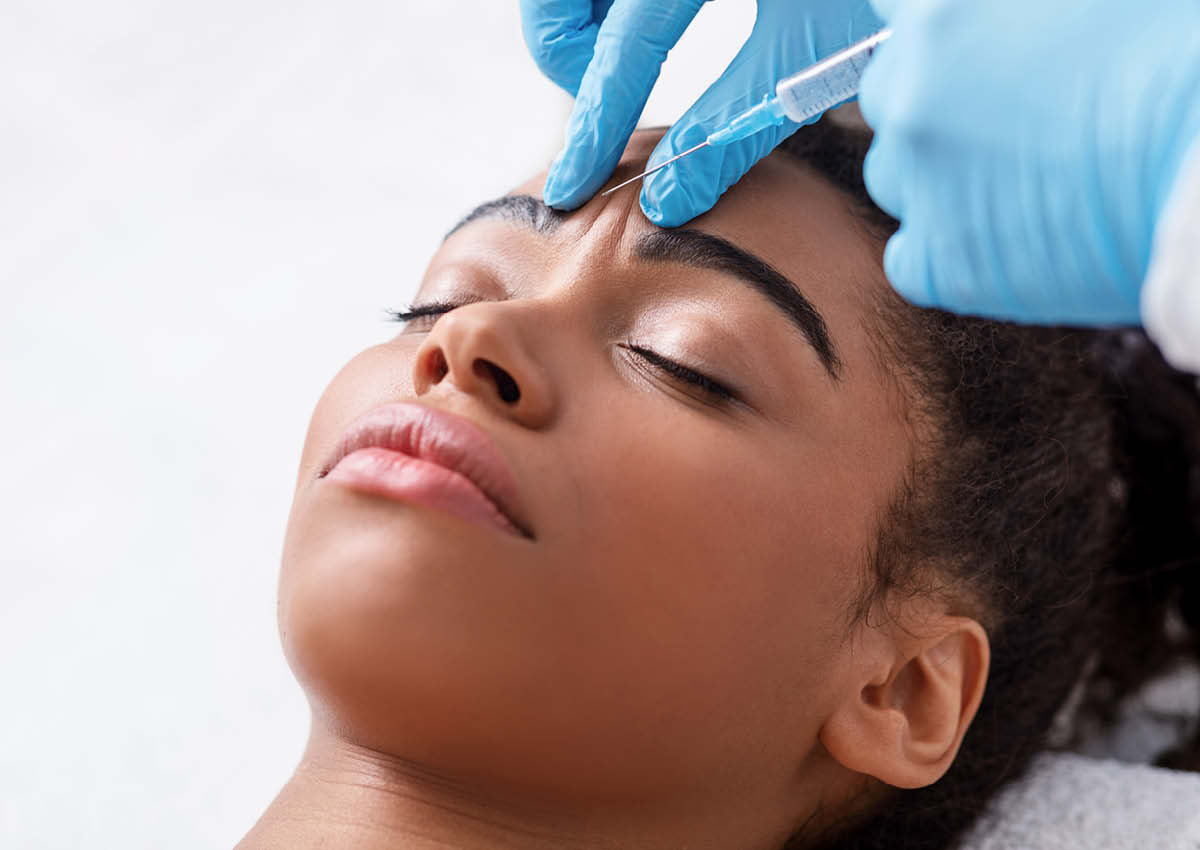
Neurotoxins
While plastic surgeons are skilled at providing advanced surgical treatments, they also understand how to utilize less invasive treatment options to prolong the results of more advanced procedures or prevent signs of aging and other concerns before they start. One of the most recommended treatment options is neurotoxin injection. Name-brand neurotoxins include Botox, Dysport, Xeomin, and Jeuveau. Each type of neurotoxin is formulated to deliver specific results, and a plastic surgeon will explain the benefits and treatment options during a consultation visit at Plastic & Reconstructive Surgery – a division of U.S. Dermatology Partners. On this page, you can learn the basics of neurotoxin treatment before your visit.What Are Neurotoxins?
Neurotoxin injections introduce a controlled amount of botulinum toxin into the body. These toxins are known to stop muscle movement, so they are utilized to stop unconscious, repeated movements that lead to the development of fine lines and wrinkles. You may have heard that neurotoxin injections freeze the face, but when used correctly, only unnecessary movements will be halted to prevent the formation of dynamic wrinkles. You’ll still be able to smile, frown, furrow your brow, and make other facial expressions after cosmetic neurotoxin treatments. Neurotoxin injections can be used to address wrinkles and fine lines in a variety of areas, including:- Around the eyes
- Around the mouth
- Above the lips
- Temples
- Cheeks
- Chin and jaw
- Nasolabial folds
- Hands
Benefits of Neurotoxin Treatment
There are numerous benefits to choosing neurotoxin treatment, including:- Aging Gracefully – allowing skin to look and feel smooth and youthful longer, so you feel more confident and show signs of aging more slowly.
- Feeling More Beautiful – many people are self-conscious about fine lines and wrinkles as they develop, and they may go out of their way to conceal them. Instead, neurotoxin injections prevent the formation and improve the appearance of wrinkles. When done expertly, neurotoxin can also enhance the lips or smooth out the jawline.
- Quick Treatment & Results – the neurotoxin injection process is completed quickly, and the results are usually visible within one week. There’s no need to make any changes to your routine to achieve dramatic results.
- Customized Treatment – each neurotoxin treatment plan is designed for the individual, so you’ll receive treatment geared toward making the improvements you want to see, and your cosmetic surgeon partners with you to plan retreatment to retain results.
